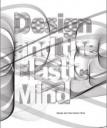The 6th International Conference on Design & Emotion is going to be hosted in 2008 by the School of Design at the Hong Kong Polytechnic University. The call for abstracts resulted in 450+ submissions. Happily, my abstract (see below) was accepted.
Five Levels of Cognitive Fit: Going From Good to Great in Human-Centric Design
Cognitive design is an approach to human-centric design that seeks to optimize the fit between the thoughts, emotions and other mental states of people and the artifacts they use. Primary emphasis is placed upon designing to achieve specific mental states. The features, functionality and form of the artifact are secondary and viewed chiefly as means to establish specific cognitive affordances. By understanding cognition in a multifaceted way – affective, biased, pattern-based situated, embodied and metaphor-driven we are able to synthesize the latest findings from laboratory and naturalistic studies into a breakthrough design methodology. This paper presents the core techniques from the methodology that are focused on generating and evaluating design ideas. Specifically, we will present an assessment tool that evaluates six factors including conscious memory (prospective and retrospective), learnability, task load, vigilance, emotional energy and maintainability, to determine how well an artifact or proposed design fits the cognition of people using it in real world settings. The tool measures or forecasts five potential levels of fit including agitating, tolerating, resonating, accelerating and integrating. Examples of each level of fit along with the cognitive science behind it are discussed. A life cycle approach is used to show that the level of mental bonding (or cognitive fit) between people and artifacts often changes significantly over time passing through distinct moments of truth (initial contact, learning to use, first critical use, routine use, separation). Designing for fit across these moments of truth is a key to supporting the entire human experience or journey with an artifact. We will show how the information collected during the assessment can be used prescriptively as insights for how to improve the design and take it to the next level of cognitive fit. To celebrate the central theme of the conference special emphasis will be placed on using the method to design artifacts (e.g. service experiences) to support the cognition of savoring and create designs that transform a positive experience (e.g. pleasure, pride, gratitude, awe) into a great experience (luxuriating, basking, thanksgiving, marveling). Actual cases from the authors consulting work and graduate class on cognitive design at Northwestern University in the US will be used to demonstrate the broad applicability of the approach.







